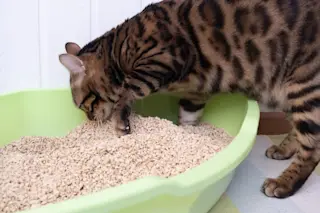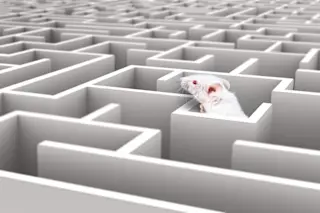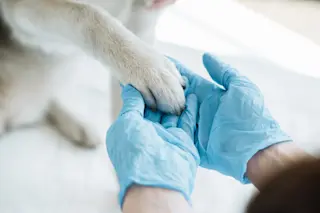When Ken Paige was a graduate student, he noticed something odd about the hunting behavior of eastern pipistrelles, the bats he was studying: they left their caves only on nights when lots of insects were also out. When insects were scarce, the bats stayed home. How could the bats, roosting deep in caves, sense the presence or absence of their prey? Paige, now an ecologist at the University of Illinois in Urbana, thinks he’s solved the mystery. Eastern pipistrelles, he says--and perhaps several other species of bats as well--can apparently sense changes in air pressure and use those changes to predict the behavior of their insect prey.
Insects, being cold-blooded, prefer warm weather; the cold makes them sluggish and unable to fly. Changes in the outside temperature don’t reach the eastern pipistrelles when they’re roosting as much as a quarter- mile inside an Illinois cave, but changes in barometric pressure do. Low air pressure means light, rising air, and on spring and fall evenings, when Paige studied his bats (they roost outside in summer, and hibernate in caves in winter), that means warm, cloudy weather. High pressure, on the other hand, signals a cold, clear night.
Paige found that the majority of the pipistrelles left their roosts on hunting sorties only when the barometric pressure fell below 29.1 inches of mercury. Using a middle-ear receptor called the Vitali organ--the same organ migrating birds use to track air pressure and thus avoid bad weather--the bats can detect barometric pressure changes smaller than one- tenth of an inch. Other researchers had observed that the Vitali organ in bats responds to pressure changes, says Paige, but no one knew why such an organ would be useful for bats.
The only catch in this efficient system is that low pressure can also mean rain, and rain means no insects. A pipistrelle can’t tell from deep inside a cave if it’s raining outside, and it has to use a lot of energy to fly out to see. If it flies out of a cave and there’s still no food, and it does that for a few nights, a bat is in a lot of trouble, says Paige. Pipistrelles can die if they go as few as three days without food.
But the bats may also use air pressure changes to regulate their metabolism and save energy, says Paige. Their Vitali organ connects to the hypothalamus, the part of the brain that controls metabolism. In lab tests, Paige found that the bats fall into a hibernation-like torpor at high pressure, when there is no need for them to move. But even on low-pressure days, they keep their metabolism relatively low while roosting, thus saving energy for their hunting forays. There’s strong selection for ways to conserve energy, says Paige, because bats consume it so rapidly.














